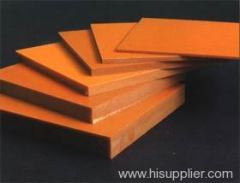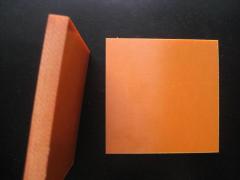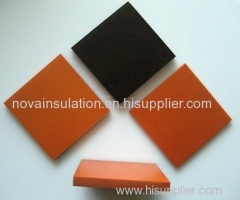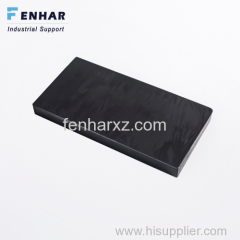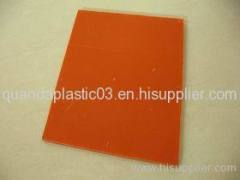
bakelite sheet
| Min. Order: | 500 Kilogram |
|---|---|
| Trade Term: | FOB |
| Payment Terms: | T/T, WU |
| Supply Ability: | 200Tons/Month |
| Place of Origin: | Guangdong |
Company Profile
| Location: | Shenzhen, Guangdong, China (Mainland) |
|---|---|
| Business Type: | Manufacturer, Agent, Distributor/Wholesaler |
Product Detail
| Model No.: | bakelite sheet |
|---|---|
| Means of Transport: | Ocean |
| Color: | orange |
| Thickness: | 3mm-50mm |
| Size: | 1020x2020mm |
| Density: | 1.53g/cm3 |
| MOQ: | 500kg |
| Production Capacity: | 200Tons/Month |
| Packing: | packed by plastic pallet with PE film protected |
| Delivery Date: | 5-7 days after receiving payment |
Product Description
Bakelite Sheet
Color: Natural orange,yellow
Thickness:3mm-50mm
Size:1020mm*2020mm
I. Description and Properties
Bakelite is based on a phenol formaldehyde resin with the chemical name polyoxybenzyl methylene glycol anhydride. It was formed by the reaction under heat and pressure of phenol, a toxic, colorless crystalline solid, and formaldehyde, a simple organic compound, generally with a wood flour filler.
Phenolic sheet is a hard, dense material made by applying heat and pressure to layers of paper or glass cloth impregnated with synthetic resin. These layers of laminations are usually of cellulose paper, cotton fabrics, synthetic yarn fabrics, glass fabrics or unwoven fabrics. When heat and pressure are applied to the layers, a chemical reaction (polymerization) transforms the layers into a high-pressure thermosetting industrial laminated plastic.
Bakelite Phenolic is produced in dozens of commercial grades to meet mechanical, electrical and thermal requirements.
II. Characteristics
1. excellent electrical insulation made it quite desirable as casing for the growing electrical industry
2. for making patterned molds, which enabled increased production.
3. The ingredients to make the resin (carbolic acid and formaldehyde) were easily obtainable and available in large amounts.
II.Applications
Bakelite is not extensively used for general consumer products any more, due to the cost and complexity of production and its brittle nature. However, it was used in the past in a myriad applications, such as saxophone mouthpieces, cameras, solid-body electric guitars, rotary-dial telephones, early machine guns, and appliance casings. It was at one point considered for the manufacture of coins, due to a shortage of traditional manufacturing material.
An exception to the overall decline is the use in small, precision-shaped components where their specific properties are required, such as molded disc brake cylinders, saucepan handles, electrical plugs and switches, and electrical iron parts. Today, Bakelite-type materials are manufactured and produced in the form of sheets, rods and tubes for many industrial applications in the electronics, power generation, and aerospace industries, and under a variety of commercial brand names.
Today the resin is used mostly for heavy industry products and less for daily necessities. For example, the material is used often for Leiterplatten(?), pieces of machinery which are under great thermal and mechanical pressure such as brake pads. In addition,to this day,phenolic resin is also used as a binder for sheets in wood and foam materials.


